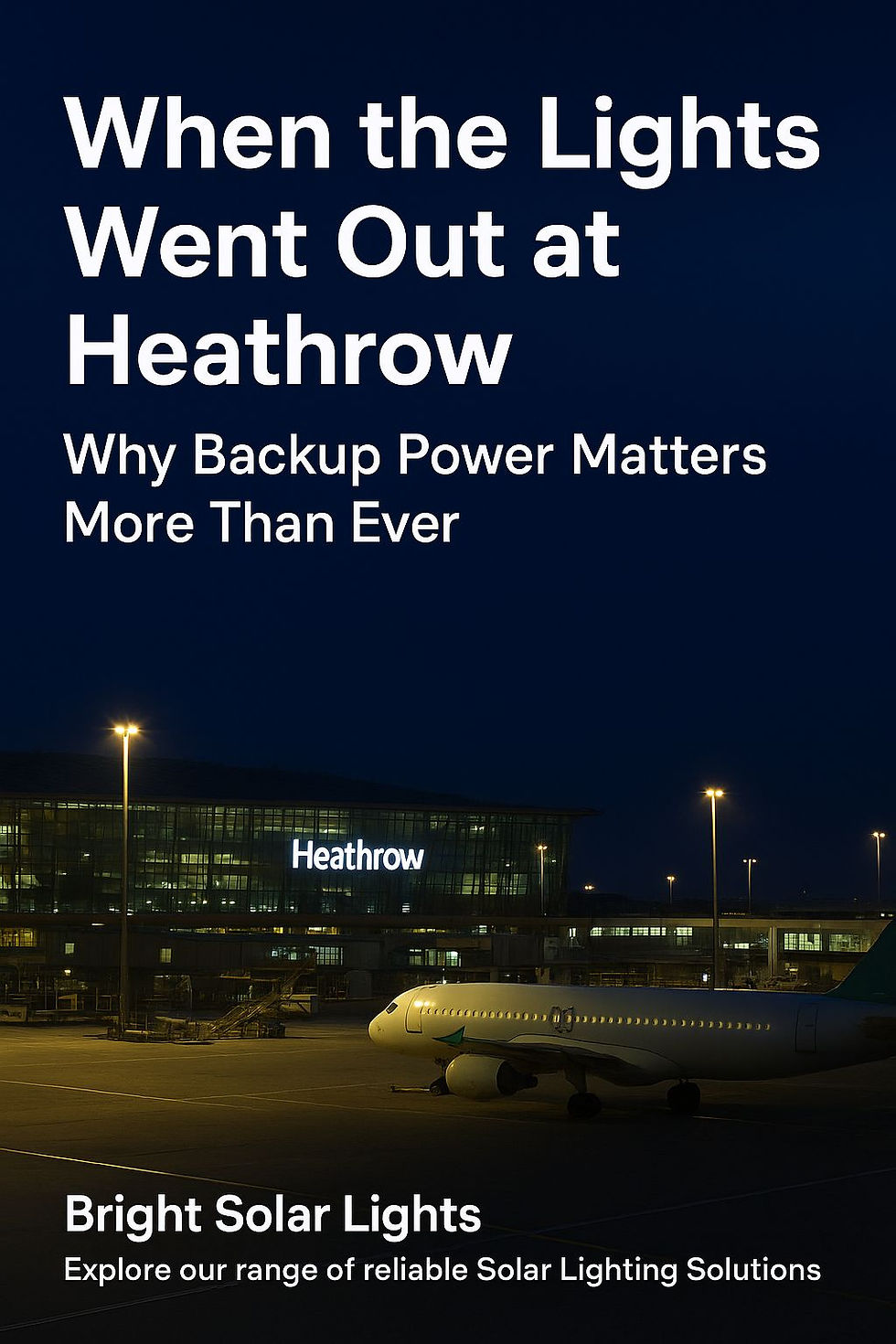What the Heathrow Blackout Taught Us About Energy Resilience
- Hussein S
- Sep 28
- 2 min read
In March 2025, Heathrow Airport experienced a complete shutdown after a fire broke out at a nearby electrical substation. The incident triggered a major power outage that didn’t just affect one of the world’s busiest airports, it also left tens of thousands of homes across West London without electricity.

For passengers, the outage caused chaos: grounded flights, delays, and confusion. For local residents, it was a stark reminder of how dependent we are on the national grid, and how quickly daily life can be disrupted when the power goes out. Why the Heathrow Outage Matters
This wasn’t just a one-off inconvenience. It highlighted three important realities:
Infrastructure is vulnerable – Even critical hubs like Heathrow are not immune to fires, failures, or grid breakdowns.
Power cuts affect everyone – From international travel to local families at home, blackouts can spread far beyond their point of origin.
The cost of downtime is massive – Heathrow’s shutdown ran into millions of pounds in losses, while households had to cope without heat, light, or working appliances.
The Growing Risk of Blackouts in the UK
Energy experts warn that the UK’s aging infrastructure, combined with rising demand, makes large scale blackouts more likely in the future. Events like the Heathrow fire serve as a wake up call: we need reliable, resilient, and sustainable power alternatives.
Solar Lighting as a Practical Solution
While no single solution can prevent a substation fire, solar lighting offers a simple, affordable way to stay prepared when the grid goes down.
Always powered – Solar lights charge during the day and work at night, independent of the national grid.
Cost-saving – They reduce energy bills while providing dependable light.
Eco-friendly – 100% renewable, helping to cut carbon emissions.
Safety first – Reliable lighting around homes, gardens, or businesses improves security and reduces accident risks during outages.
When tens of thousands of homes went dark in March, those with solar lighting weren’t left completely in the dark.
A Lesson in Resilience
The Heathrow blackout wasn’t just about planes being delayed it was a reminder that energy resilience is essential. For homeowners, businesses, and communities, investing in solar lighting is a practical step toward greater independence, safety, and sustainability.
The next power outage isn’t a question of if, but when. The question is: will you be ready?





Comments